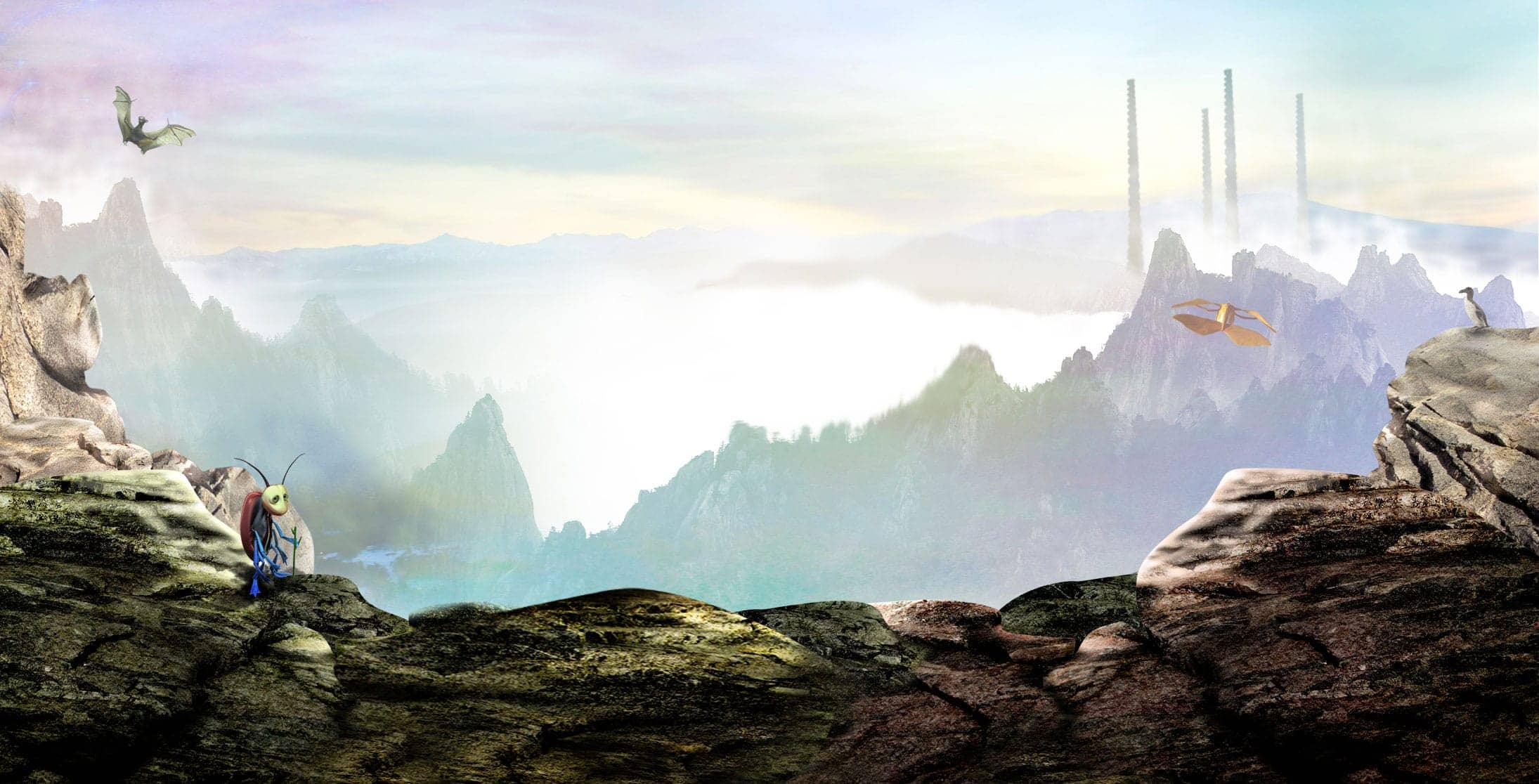🦴 As International Cephalopod Awareness Days draw to a close, Fossil Day celebrates the species that came before us. Their stories endure in stone, recorded in ammonites, belemnites, and ancient octopuses whose spirals continue to inspire science, art and design.
At Rockford’s Rock Opera, we love how fossils connect science and storytelling. On the Island of Infinity, the Fossil Record Office preserves the last one of every extinct species, their lives continuing as tales that inspire new ideas about nature, time, and evolution.
🐚 Is a Nautilus an Ammonite?
Not quite. The nautilus and the ammonite are close relatives but from different branches of the cephalopod family. Both had coiled shells divided into chambers, but ammonites had intricate, frilled internal walls called sutures, while the nautilus shell is smooth and simple.
The nautilus still glides through deep ocean waters today, virtually unchanged for 500 million years. The ammonite vanished around 66 million years ago, when the dinosaurs disappeared.
🦑 Can Squids Be Fossilised?
Yes, but only rarely. Squids are mostly soft tissue, which decays before fossilisation can occur. Ancient relatives known as belemnites left behind their solid internal shells, shaped like bullets, which are often found in limestone and chalk.
In rare cases, entire squid-like fossils have been found with preserved ink sacs, arms, and even traces of eyes, offering an extraordinary glimpse into soft-bodied life from hundreds of millions of years ago.
🧬 What Is the Oldest Known Octopus Fossil?
The oldest known octopus fossil was discovered in Lebanon and dates back around 95 million years. It belongs to a species called Palaeoctopus newboldi, and is so well preserved that the outline of its body, arms, and even the faint impressions of suckers can still be seen.
This ancient octopus had eight visible arms, each with two neat rows of suckers. The fossil shows that the basic octopus design had already evolved long before the first dinosaurs. Soft-bodied animals rarely fossilise, so discoveries like this are extremely rare, but the gaps in the record mean there is still much we don’t know.
At Rockford’s Rock Opera, we are firm believers that a ten-armed octopus may once have existed. Our officious Colonel Utensil, the ten-legged Dectopus from Lost on Infinity, represents the species that may have existed but never left their mark in stone.
🧩 Could the Dectopus Have Been Real?
When scientists discovered Palaeoctopus newboldi, they found eight well-defined arms, but soft-bodied fossils are often incomplete. It’s possible that two additional limbs simply weren’t captured in the sediment.
Genetic studies show that modern octopuses likely evolved from ten-limbed ancestors, losing a pair of limbs over time. Some ancient cephalopod fossils even display faint traces of extra filaments, suggesting that early forms once had more than eight.
So while no ten-armed octopus fossil has yet been found, there’s room for possibility. On the Island of Infinity, Colonel Utensil continues to wave all ten limbs in welcome, perhaps a nod to a forgotten chapter in the ocean’s history.
🧠 Did Humans Evolve from Cephalopods?
No. Humans and cephalopods share a distant common ancestor from more than 600 million years ago, but our evolutionary lines diverged very early.
Both evolved complex nervous systems, though in completely different ways. This independent rise of intelligence is known as convergent evolution, where nature finds similar answers to similar problems through entirely separate paths.
🦕 Is the Octopus Older Than Dinosaurs?
Yes. The first ancestors of modern octopuses appeared over 300 million years ago, long before the dinosaurs. Cephalopods were already thriving in ancient seas while life on land was only beginning. They have survived five mass extinctions, making them one of the oldest animal lineages still alive today.
🌍 From Fossils to the Island of Infinity
The fossil record is a vast library with missing pages. Only about two per cent of all species that ever lived have been preserved, which means most of life’s story is still a mystery.
In Lost on Infinity, the spiral island leads to a place where all these stories converge: The Fossil Record Office.
Here, four towering spires rise from the centre of the island, their walls made of rock and time. Embedded in those walls are fossils of wings, leaves, and shells, each one marking a life once lived.
This is where the the last of every extinct species is recorded. It’s a place that bridges imagination and science, past and present, extinction and survival.
While it’s a fictional creation, the Fossil Record Office reflects something very real: the idea that no life form ever disappears without leaving a mark.
🎶 Discover more through story and song
At Rockford’s Rock Opera, we believe nature’s resilience can inspire both science and imagination. Our story Lost on Infinity explores extinction, biomimicry, and the secrets of the natural world through an unforgettable musical adventure. In Lost on Infinity, we meet Colonel Utensil, the ten-legged Dectopus who leads the extinct Squid Squad, guardians of the past who carry messages of hope for the future.
Get the Lost on Infinity illustrated book with free musical audiobook – a totally immersive experience.
Listen to the first part of the Lost on Infinity audiobook and watch the animated adventure free on Apple App Store and Google Play.
Download our FREE lesson plans and slides about Extinction and Biomimicry. We also have a selection of classroom activities on our website.
For even more exploration of the natural world, tune in to our Stories, Science & Secrets podcast for kids. Join Matthew, Elaine, Steve Punt and special guests, as we delve into the fascinating world of biomimicry and the inspiring ways science learns from nature’s genius.
Biomimicry (learning from nature) is a fascinating classroom topic. You can read more about biomimicry and see all the discoveries we have documented in our Creatures’ Secrets Database.

